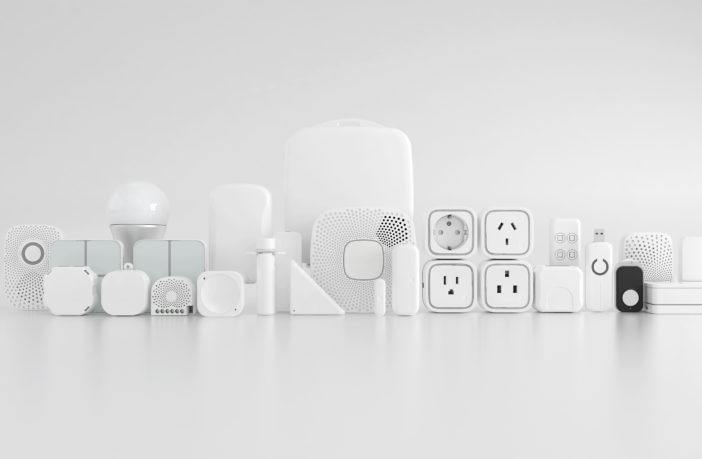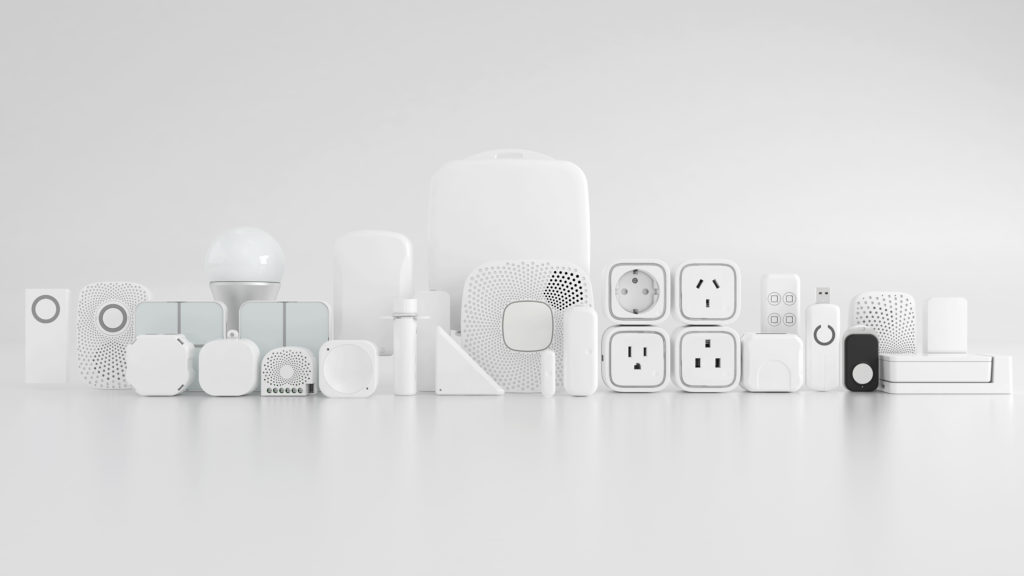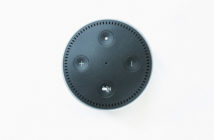In our modern world of interconnectedness, it pays to have our devices connected as well. Our smart appliances, no matter how smart they are, can only do so much if they’re not linked to one another.
When making your home all the more high tech, there are two necessary devices for ensuring everything is well-synced, secure, and safe. These two networks are the Zigbee and the Z Wave.
Indeed, the Zigbee vs. Z Wave debate is one that you’ll likely stumble upon soon, if you’re not already familiar.
Contents
Smart Home Wireless Networks Explained
Before exploring the differences between the Zigbee devices and the Z Wave devices, it will help to understand what they are and how they work.
Manager-Employee Metaphor
Imagine your smart devices as employees in your home. You can tell your door to lock and unlock, you can tell your lights to turn on when they sense you.
In this metaphor, the network is a manager that connects all of these devices together. It gets your appliances all on the same page, letting one depend on the information stored in another.
In a way, smart home wireless networks are a method for your smart devices to ‘talk,’ allowing you to control all of them from one central hub.
More Specific Than a Wi-Fi Network
In this way, your smart home wireless network operates similarly to Wi-Fi. However, it is different from Wi-Fi, which means that it won’t compete with the connection that your Wi-Fi has to your other devices.
After all, we know how terrible Wi-Fi can get when many people (and machines) connect to it, and we don’t want something as crucial as the lock on our doors to be interrupted.
However, while there are smart appliances that can also rely on connectivity using Wi-Fi, these smart wireless networks are created specifically to support smart appliances. Most importantly, they are designed as a mesh network.
A Mesh Network Means Better Connection
This mesh network means that every device is connected to every other device. Using our Wi-Fi metaphor, every appliance connected under a Zigbee or Z-wave works as a repeater, with each appliance allowing its signal to ‘hop’ off of to another appliance.
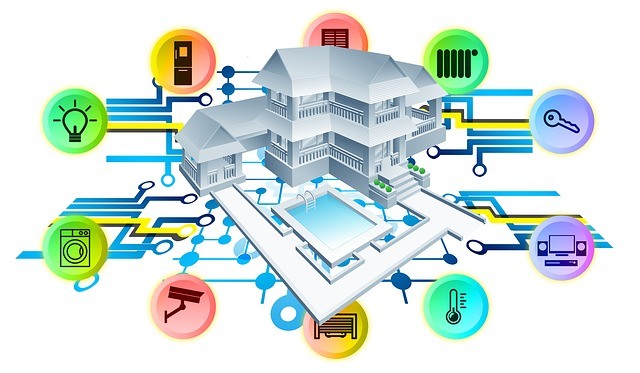
This means that if one appliance in your smart home is broken, everything else will work as they should.
Unlike a Wi-Fi network, a smart wireless network can keep transmitting data amongst itself; a Wi-Fi router that cannot connect to a network will not be able to let any device connected to it reach the network as well.
Less Energy, Better Performance
Another important distinction between a smart wireless network and a Wi-Fi connection is the amount of data that it transmits.
For Wi-Fi connections, the more data it can transmit, the better. Larger data transmissions mean faster downloads and uploads from your device to the internet.
For smart wireless networks, we want to go small. They are designed to transmit limited amounts of data, so as to take up less energy. After all, it doesn’t take a lot for a sensor to tell your porch lights that they need to turn on. Because of this, a single cell battery can last a long time in a smart wireless network.
How to Choose the Right Network
Since both networks will make a big difference to the ecosystem of your smart home, it’s important to be wise in choosing them. When deciding between a Z Wave or Zigbee, here are a few things to consider.
What is the intended use of your wireless network? Chances are, you are looking to connect the devices in your home, but this isn’t the only use for it. There are also many company buildings that use wireless networks, from shops to offices.
A few more things to consider are the size of your lot and the amount of money that you’re willing to spend.
Z Wave vs. Zigbee Difference
While you’re picking out the right network for you, it pays to look at the differences between the Zigbee and the Z-wave. After all, they are an important component in any smart home.
To figure out the network that’s ideal for you, let’s take a close look at both the Zigbee and the Z Wave.
Z Wave
In response to the release of the Zigbee, the Z Wave was born. Unlike the Zigbee, the Z Wave is owned by one company, Silicon Labs (who bought the Z Wave in early 2018.) 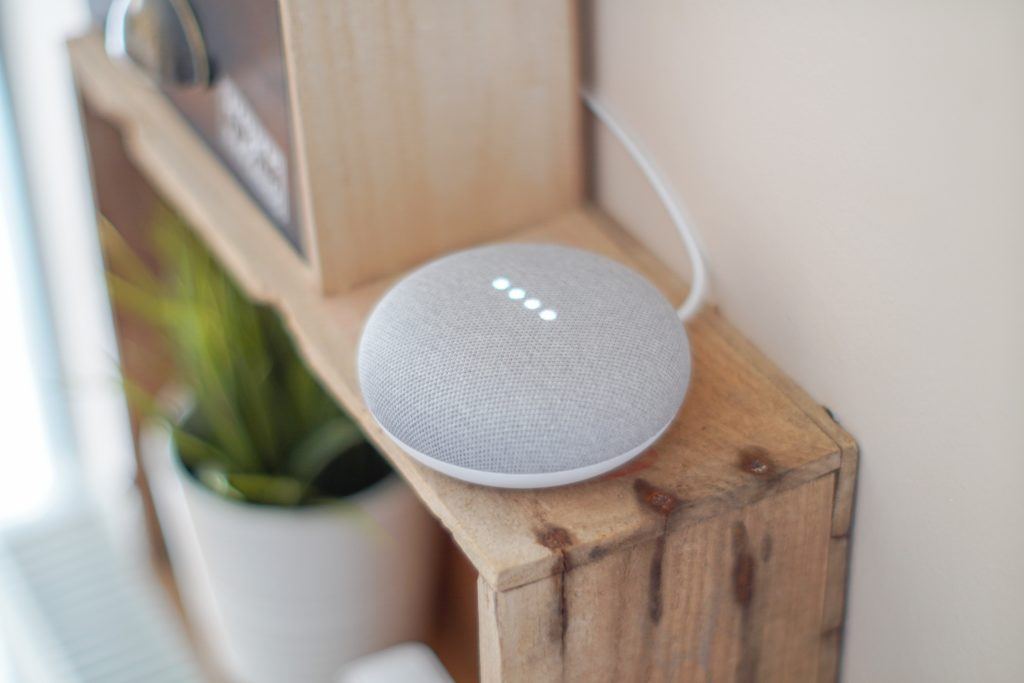 Since the Z Wave is owned by just one company, compared to Zigbee’s group of companies, the protocols used have remained standardized and, more importantly, compatible, with all devices that use the Z Wave.
Since the Z Wave is owned by just one company, compared to Zigbee’s group of companies, the protocols used have remained standardized and, more importantly, compatible, with all devices that use the Z Wave.
Like the Zigbee, the Z Wave also has its own alliance, called the Z Wave Alliance. Unlike the Zigbee, this is a group of members (more than 700 in total) that create about 2,400 certified products, which comprise of the 94 million devices worldwide.
Now that we are familiar with each of the wireless home networks, let’s take a look at their specific differences.
Zigbee
The Zigbee was first introduced to the market during 2005 in what was called the Zigbee Alliance – a group of companies that were allowed to adopt the Zigbee trademark.
Unlike Z Wave, Zigbee was open-source, which meant that the Alliance could use the language to create their own products.
This resulted in the use of different protocols, which meant that while appliances were created using the same language, they still didn’t understand each other.
This was remedied in Zigbee 3.0, which standardized the different protocols using the Zigbee language.
A fun fact: the Zigbee name is a combination of the words ‘zig’ and ‘bee,’ which reference the ‘waggle dance’ that bees do to signal other bees in the hive of resources (like pollen or water) nearby.
In the same way, the Zigbee allows devices to relay the information they have received to each other.
Here’s a video explaining more on Z Wave.
Security
With all the data flying around, it’s natural to be worried about the security of your network.
The encryption that both the Zigbee and the Z Wave uses is AES 128-bit symmetric encryption – which is rather high quality. In fact, it’s the same kind used by some online banks.
However, there are always concerns about this encryption not being enough. Specifically, Zigbee has experienced controversy surrounding its security, especially with how they handle encryption keys.
Nonetheless, it should be noted that every technology has its own vulnerabilities; there’s only so much the technology itself can do to ward off invaders.
Most importantly, the vulnerability of these wireless networks lies in the password that you’re using to access it. You know the drill; if your password is weak, it’s more prone to being hacked.
However, considering the patterns of hackers today, wireless networks aren’t used to take control of the device, but rather to use the network’s resources for their own.
Examples of this include mining for Bitcoin or hacking for other passwords. So worry not – these things aren’t within the capability of wireless home networks today.
Range
Zigbee’s range is one of its weakest points. It has a maximum range of 30 feet, and that’s without the presence of the usual barriers like walls and other signal interferences.
The Z Wave, on the other hand, can reach distances of 30 meters, or more than 100 feet.
Z Wave also has its SoCs (System of Chips), which are small enough to be fitted into inconspicuous places around the house, so as to bolster your connection without having to take up space.
They are also fitted with a battery (that can last for up to ten years), meaning you can fit these chips inside walls, under furniture and in the garage.

Connection
The Zigbee operates on the 2.4GH, 900MHz, and 868MHz frequencies. If this seems familiar to you, that’s because it is; these are the same frequencies that common Wi-Fi connections use.
That may prove to be a problem, as your Wi-Fi and smart home network may interfere with each other, making the point of creating a separate home network moot.
On the other hand, the Z Wave operates on a 918 and 960MHz, which means that it won’t interfere with your Wi-Fi, or even any other Zigbee devices nearby.
Speed
While there may be interferences when using a Zigbee, it makes up for it with the speed of that connection.
The Zigbee can relay data at about 40 to 250 kbps. Compared to Z Wave’s 9.6 to 100 kbps, Zigbee’s speed is superior, and can definitely relay your commands faster.
Notice, when compared to the speeds that we are used to with our Wi-Fi connections, how slow these data rates are. It should be noted that, as a smart wireless network, there isn’t that much use for fast data rates.
The commands used to relay information about motion, time, and weather are minuscule, and may not need a fast data rate in order to reach the next device.
Considering the speed at which your network operates isn’t a deal breaker, especially when both of them end up working as fast as the other.
Devices Supported
Even if the Zigbee doesn’t have the largest range, it makes up for it with the number of devices that it supports.
After all, what does it matter how small your reach is, if you can hop your signal off of more than 65,000 devices? That’s bound to be enough for even a millionaire’s mansion.

If you’re not a millionaire, though, you probably don’t need to support 65,000 devices in your own home, or even in your company building. That many devices may be overkill.
Z Wave supports a measly 232 devices, but we can all agree that it’s enough for most of us.
Cost
Build Your Smarthome did a price breakdown comparing the devices that use Zigbee and Z Wave to determine which network will cost you more money.
Their final verdict? Zigbee is slightly cheaper than Z Wave, although the difference is so minor that it can be ignored.
Z Wave vs. Z Wave Plus
Before we finish our comparison between the Zigbee and the Z Wave, it’s worth mentioning the differences between the Z Wave and the Z Wave Plus.
As its name would imply, the Z Wave Plus improves on the features of the original Z Wave. These improvements are in areas such as bandwidth, battery life, and range.
If the features of the Z Wave are not enough, it’s always an option to improve these features with the Z Wave Plus, so as to make up for any pitfalls.
This video goes into more detail on ZigBee devices.
Final Verdict
When compared side by side, one protocol doesn’t have a massive difference over the other. Each of them has their own disadvantages, which they make up for in other areas.
When choosing between the Zigbee and the Z Wave, what’s important is that you as a consumer know what you’re after. Are you more concerned with range or the number of devices that you can connect? Is speed more important to you or is signal strength more crucial?
Also note that the Zigbee is more commonly used in larger commercial areas, as this is its intended purpose when it was first created.
The advantages of the Z Wave, in contrast, then make sense; it is less likely to have interference from Wi-Fi networks, and it supports an adequate number of devices.
If your home (or even establishment) has these kinds of needs, it would be best to go with a Z Wave. Otherwise, the Zigbee is your best bet.
This just goes to show that having a customized network truly relies on your customized needs.
At the end of the day, one isn’t a better network over the other. It’s just a matter of figuring out what you need and finding the protocol that could fulfill those needs.
And if you can choose between the protocols (or chose to use both), congratulations! It’s time to sit back, relax, and let your smart appliances do the work.
What’s your pick? Z Wave or Zigbee?

